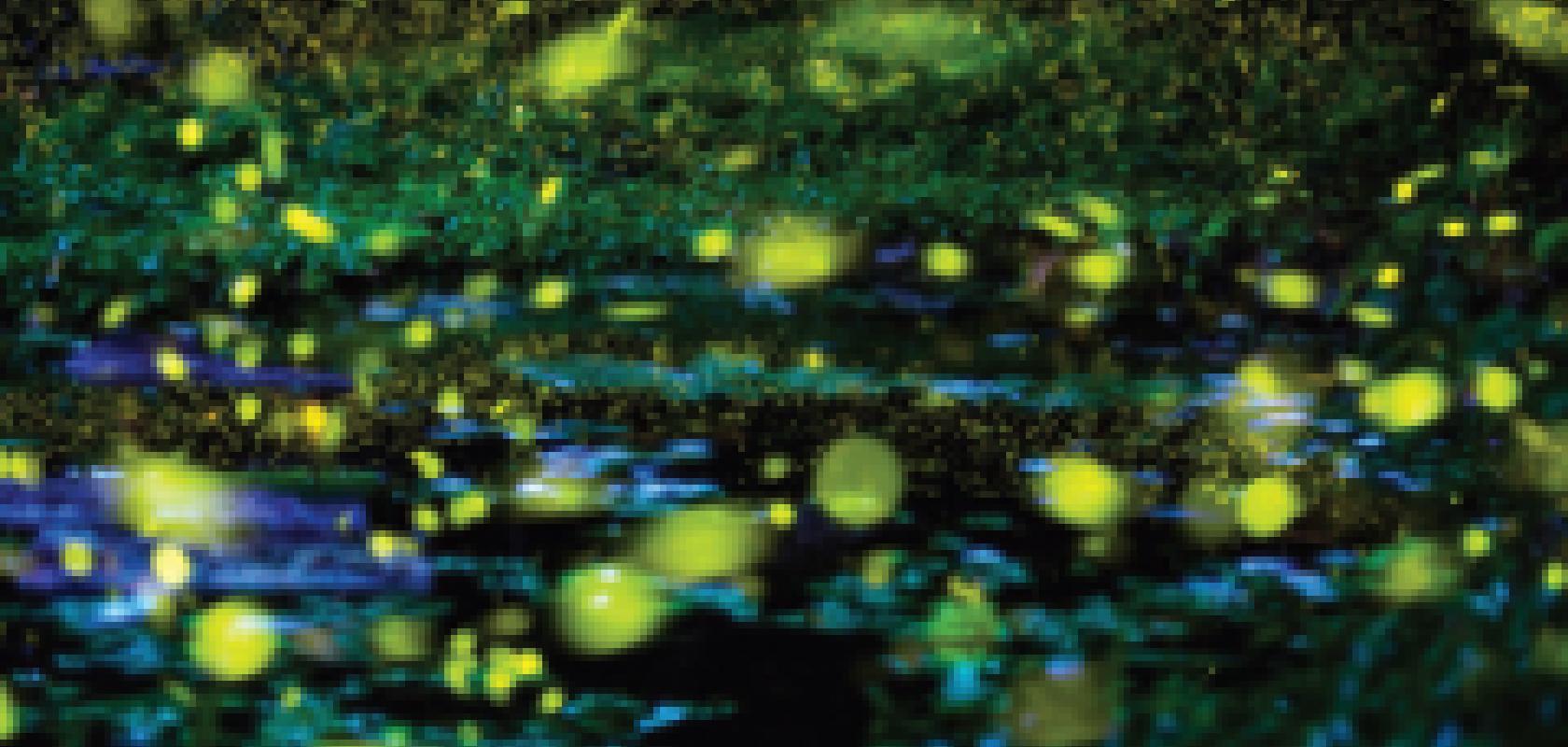A more efficient light-emitting diode (LED) has been made possible by scientists copying the jagged scales found on fireflies.
Researchers from Belgium, France, and Canada studied the creatures’ bioluminescent abdomen, which flashes to attract mates. The abdomen has jagged scales that enhance the glow of its flashes. The scientists identified an unexpected pattern with the scales, and applied this to an LED overlayer to mimic the natural structure.
‘What’s nice about our technique is that it’s an easy process and we don’t have to create new LEDs,’ says Annick Bay, a doctoral student at the University of Namur in Belgium. Bay studies natural photonic structures, including beetle scales and butterfly wings. The firefly is also known as a lightning beetle. Bay says: ‘With a few more steps we can coat and laser pattern an existing LED.’
Bay and her colleagues think it should be possible, with some modifications to current manufacturing techniques, to apply these novel design enhancements to current LED production within the next few years.
Fireflies create light through a chemical reaction that takes place in specialised cells called photocytes. The light is emitted through a part of the insect’s exoskeleton called the cuticle. Light travels through the cuticle more slowly than it travels through air, and the mismatch means a proportion of the light is reflected back into the lantern, dimming the glow. The unique surface geometry of some fireflies’ cuticles, however, can help minimise internal reflections, meaning more light escapes to reach the eyes of potential firefly suitors. Human-made light-emitting devices like LEDs face the same reflection issues.
The overlayer was found to increase LED light extraction by up to 55 per cent, and it could be tailored to existing diode designs to help humans light up the night while using less energy. ‘The most important aspect of this work is that it shows how much we can learn by carefully observing nature,’ says Bay.
Bay and her colleagues used a scanning electron microscope to identify structures such as nanoscale ribs and larger, misfit scales, on the fireflies’ cuticles. The edge structures have what the researchers describe as ‘a factory roof shape,’ with the tips of the scales protruding and having a tilted slope, like a roof. The protrusions were found to repeat about every 10 micrometres, with a height of about three micrometers. Bay and her colleagues thought nanoscale structures would be more effective but instead, the insect’s micrometre scale structure was found to perform best in improving light extraction.
Other research groups have studied the photonic structures in firefly lanterns. Those groups mimicked some of the structures to enhance light extraction in LEDs, but focused on nanoscale features. Bay’s team is claiming to be the first to identify micrometre-scale photonic features, which are larger than the wavelength of visible light, yet are still better at light extraction than the nanoscale features.
When the researchers used computer simulations to model how the structures affected light transmission, they found that the sharp edges of the jagged, misfit scales let out the most light. The finding was confirmed experimentally when the researchers observed the edges glowing the brightest. Nicolas André, a postdoctoral researcher at the University of Sherbrooke in Canada, deposited a layer of light-sensitive material on top of LEDs and then exposed sections with a laser to create the triangular factory roof-style profile. Since the LEDs were made from a material that slowed light even more than the fireflies’ cuticle, the team adjusted the dimensions of the overlayer’s protrusions to a height and width of five micrometres to maximise light extraction.
The firefly specimens that served as the inspiration for the effective new LED coating came from the genus Photuris, which is commonly found in Latin America and the United States. ‘The Photuris fireflies are very effective light emitters, but I am quite sure that there are other species that are even more effective,’ says Bay. ‘This work is not over.’
However, not all fireflies have this key structure. Bay discovered that the firefly found on the Caribbean island of Guadeloupe did not have the factory roof structure on the outer layer. The research was revealed in an issue of Optics Express, a peer-reviewed, scientific journal published by the Optical Society of America.


